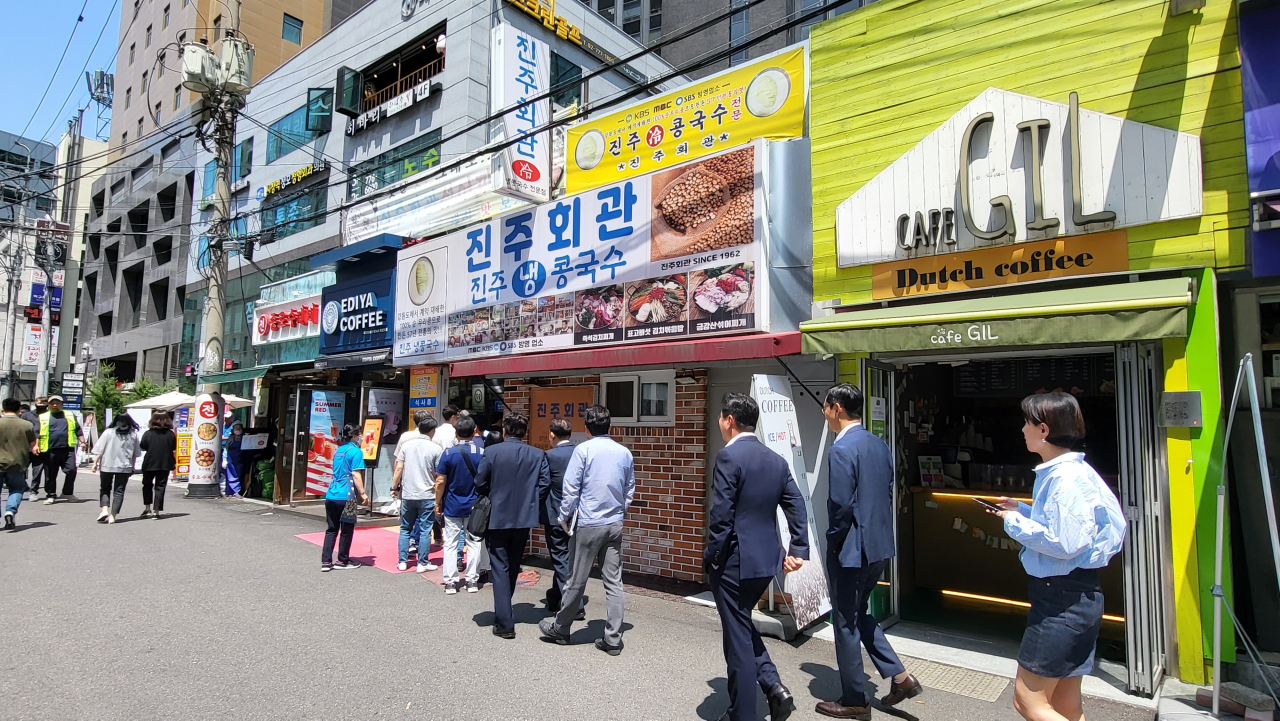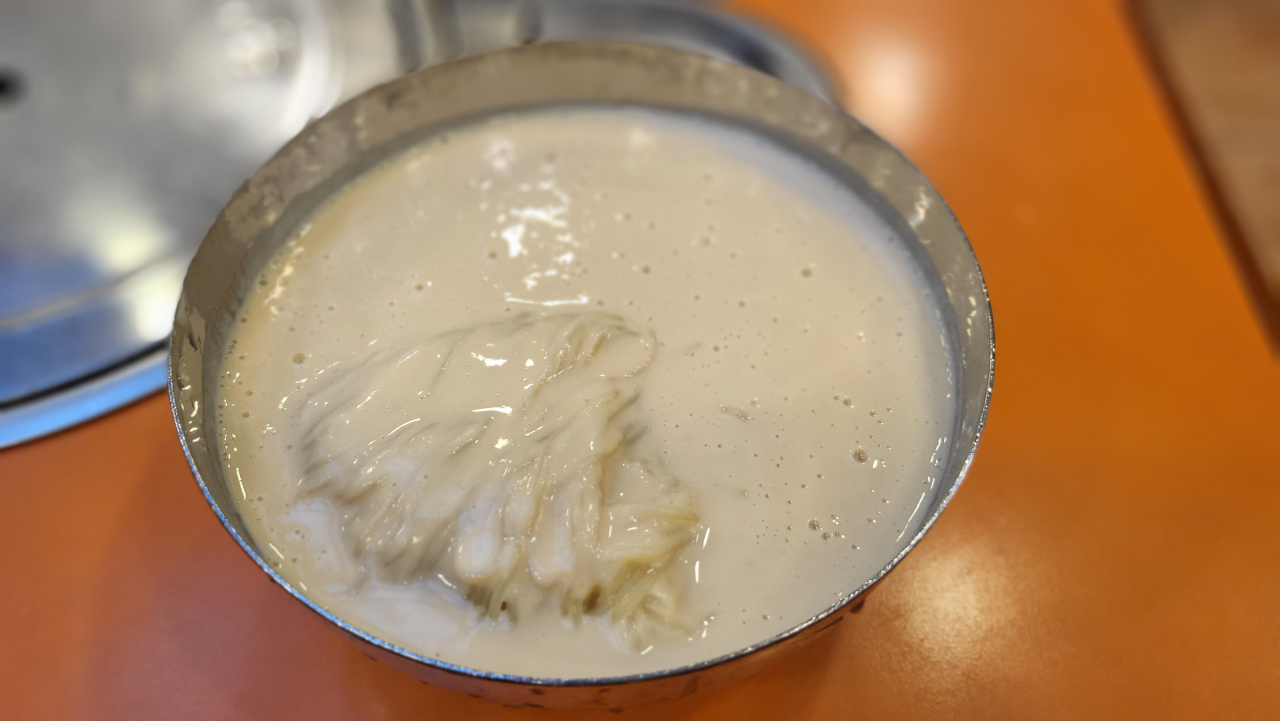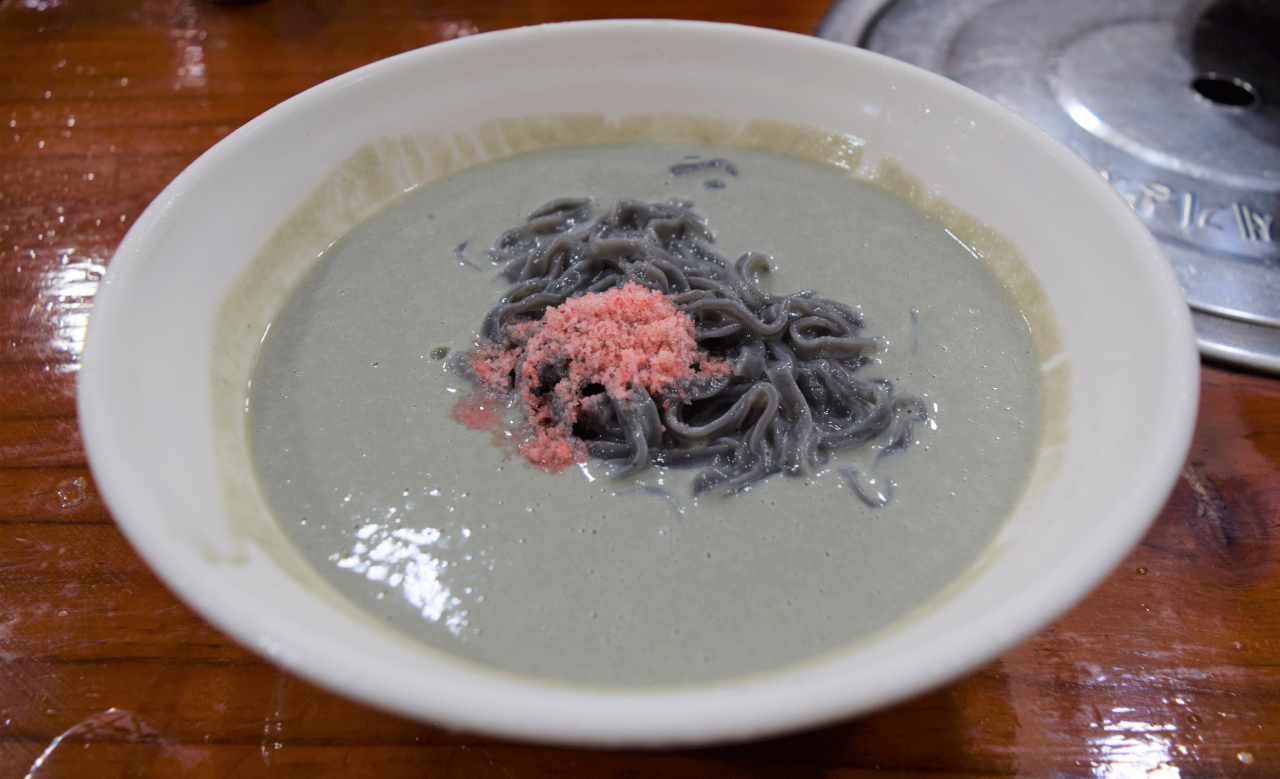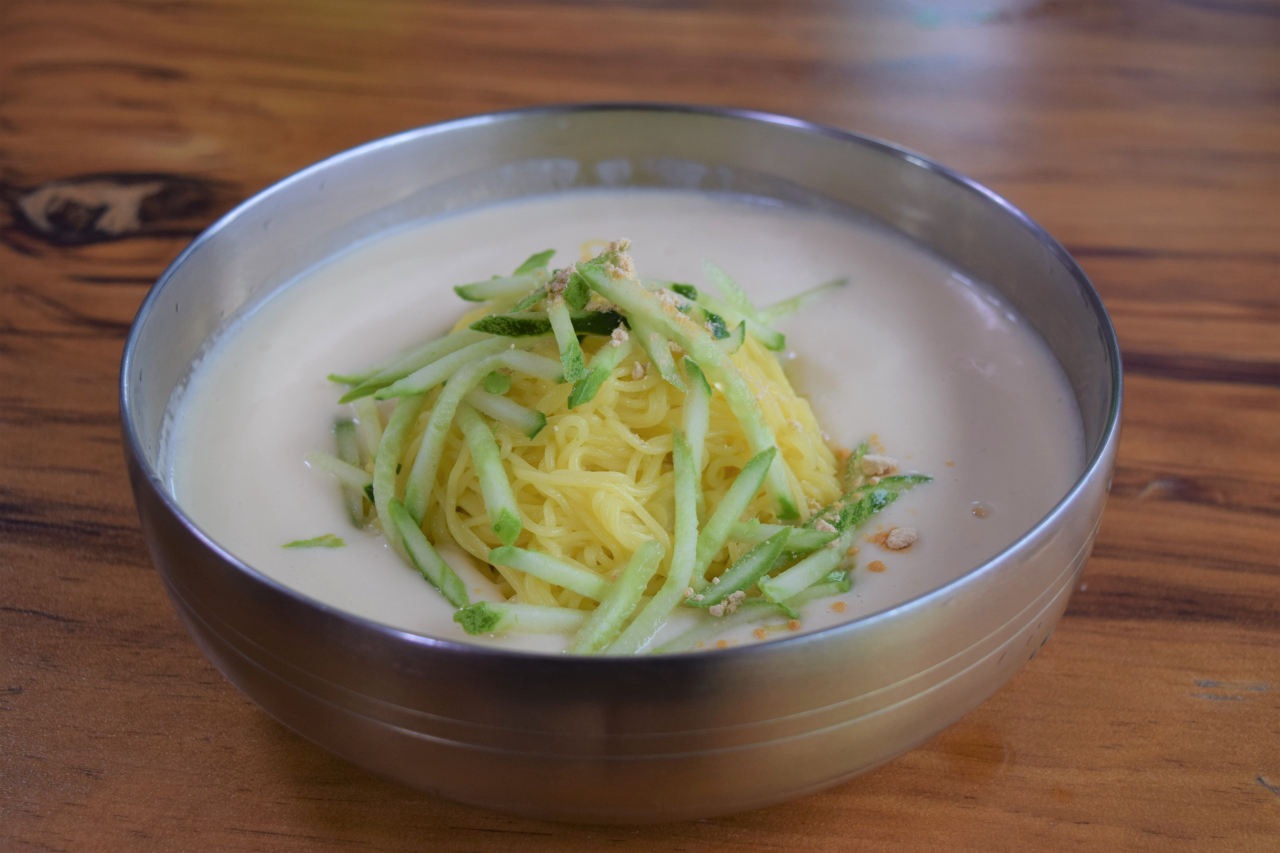
On a blistering weekday afternoon, delightful cries of "siwonhada," or "that's refreshing," echo outside a bustling noodle establishment in the heart of Seoul. A lengthy queue starts to form at 11:30 a.m. catching the attention of passersby.
The noodle restaurant specializes in kongguksu, or noodle in cold soybean soup that is rich and creamy.
Kongguksu combines simplicity, nourishment and a unique taste that has captivated the Koreans' taste buds for generations.
Typically served in a chilled bowl, the cold soybean soup and noodles go down easily, offering a cool respite from the summer heat.

Jinju Hoegwan
Originally opened in 1962 in Jinju, South Gyeongsang Province, the restaurant now stands in the center of Seoul in a busy restaurant alley a few blocks away from Seoul City Hall.
Hwangtae, or yellow soybeans from Gangwon Province, are ground to make the soup and noodles.
Jinju Hoegwan's noodles made with potato starch are very chewy.
The soup here is extremely dense and creamy and the dish is served without any garnish.
Kongguksu here is served already well-seasoned, so take a sip of the broth before adding salt or sugar to taste.
The kimchi is also subject to evaluation by kongguksu enthusiasts. Jinju Hoegwan's kimchi falls on the sweeter side and is less pungent than the typical Gyeongsang Province style.
"We sold out at 3,500 bowls before 6 p.m. last Friday, which signals that summer is here in earnest. The lines were formed in a big wide circle surrounding the restaurant," the owner of Jinju Hoegwan told The Korea Herald.
A bowl of kongguksu costs 15,000 won.

Ejo Sonkalguksu
Ejo Sonkalguksu, about a five-minute walk from Guro Station Exit No. 1, stands out among other kongguksu restaurants for its use of seoritae, or black beans.
Seoritae tastes nuttier and is generally coarser in texture.
Noodle lovers will immediately notice that the appearance and texture of the noodles resemble that of kalguksu, or hand-cut, flat noodles.
Some pink-hued bay salt from Sinan County, South Jeolla Province, that are roasted with bokbunja, are sprinkled on top of the kongguksu, which delights the eyes and the mouth.
"Instead of using noodle-making machines, we work the dough to make the noodles ourselves, and simmer them in our own seoritae soup," Ejo Kongguksu's owner-chef told The Korea Herald.
Although extremely rare for kongguksu to be served warm, here, you order on-kongguksu.
The recommended way to enjoy kongguksu at the restaurant is to finish half of the kongguksu with the sprinkled salt, then add two teaspoons of sugar, stir and savor the rest.
Kongguksu at Ejo Sonkalguksu is priced at 12,000 won.

Gongju Kalguksu
If you are trying out kongguksu for the first time and harbor some apprehension to the typically thick taste of bean soup, Gongju Kalguksu can help you ease into the whole kongguksu experience.
The restaurant is located a minute away from Daerim Station Exit No. 8, and offers a milder and more delicate flavor compared to other varieties.
Not as rich, thick and dense compared to the other two restaurants, Gongju Kalguksu provides a gentle introduction to the realm of kongguksu.
The restaurant uses jangdankong, a type of baektae, or white soybeans, grown in Paju, Gyeonggi Province, which has a relatively subtle and clean finish.
The bowl of kongguksu is delicately topped with thinly sliced cucumbers, providing a refreshing and crunchy taste that complements the silky soybean soup and noodles.
A recommended side dish is a plate of mini-sized mandu, steamed dumplings.
Kongguksu costs 10,000 won, and a plate of dumplings, 5,000 won.





